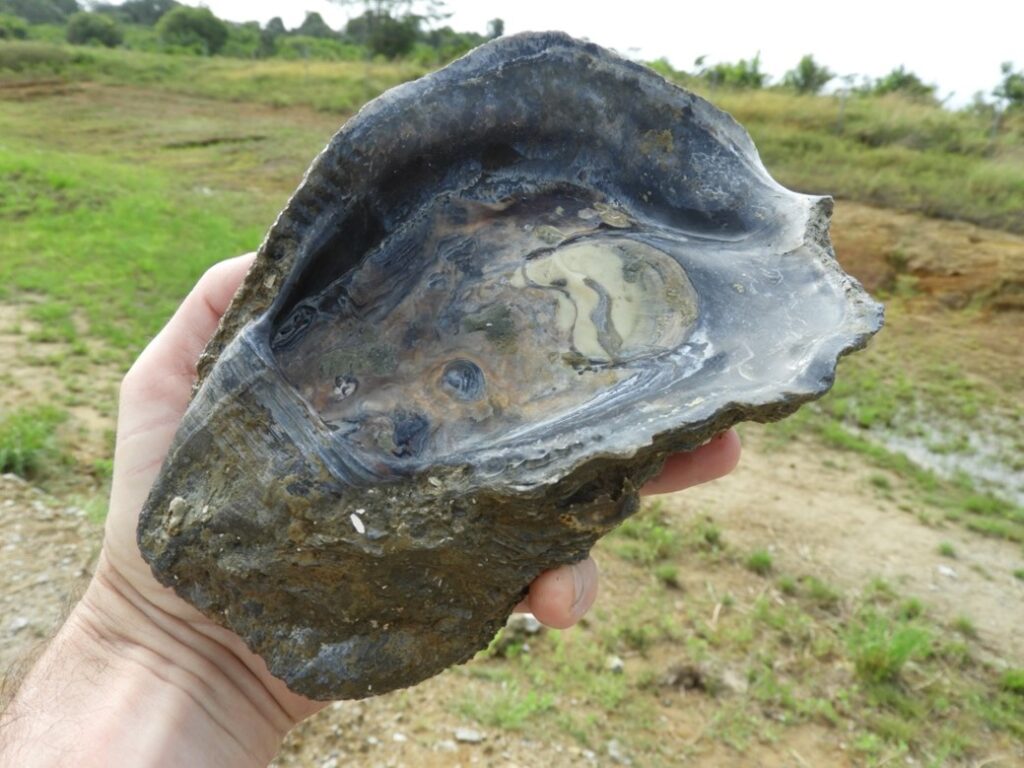A rich 125,000-year-old coastal ecosystem discovered beneath Ariane 6 in French Guiana
An international consortium of paleontologists, geologists, and biologists, coordinated by scientists from the Institute of Evolutionary Sciences in Montpellier (University of Montpellier/CNRS/IRD) and the University of French Guiana/Géosciences Montpellier, describes the discovery of fossil assemblages covering the last 130,000 years, beneath the Ariane 6 rocket launch site in Kourou, French Guiana. These coastal assemblages, rich in more than 270 animal, plant, and microorganism species, are the first to be unearthed in the equatorial Atlantic. They provide information about the environmental and climatic conditions that prevailed in the region and its populations, both during a very warm period (the last interglacial period, from 128,000 to 116,000 years ago) and the cold period that followed (the last glacial period, from 100,000 to 15,000 years ago).
This discovery, published in the Proceedings of the National Academy of Sciences of the USA, provides valuable information on unspoiled tropical coastal ecosystems in the equatorial Atlantic and the potential long-term impact of climate change on endangered species.

Fossilized oyster dating back approximately 125,000 years, discovered near the Ariane 6 launch pad in Kourou, French Guiana, during the 2019 field campaign. (Credit: P.-O. Antoine)
French Guiana: a favorable research area
Tens of thousands of fossils were unearthed on the grounds of the Guiana Space Center (CSG) between 2017 and 2021, thanks to authorization from CNES, the owner of the site. By pooling their expertise, paleontologists, geologists, and biologists were able to accurately reconstruct French Guiana's past ecosystems for the first time. According to the authors, the results provide a better understanding of the ecology and biogeography of tropical coastal ecosystems in the equatorial Atlantic prior to any human influence, as well as the potential long-term impact of ongoing climate change on current and endangered species. Indeed, climate oscillations over the last 2.5 million years have led to radical changes in the distribution of organisms across the globe. In particular, the last interglacial interval (128,000-116,000 years ago) is characterized by higher sea levels and warmer temperatures than today, making this period a plausible analogue for the global conditions predicted for 2100. However, nothing was known about the equatorial coastal fauna and flora of this period around the Atlantic until fossiliferous clays were uncovered during the development of the Ariane 6 launch site.
More than surprising discoveries
Firstly, scientists were able to characterize a coastal fossil assemblage dating from approximately 130,000 to 115,000 years ago. According to Pierre-Olivier Antoine (University of Montpellier) and Arnauld Heuret (University of French Guiana), who led the study, "the reconstructed marine and terrestrial fossil communities included more than 270 species, including foraminifera, mollusks, bony fish, bryozoans, decapods, sharks, and numerous plants. All the fossil specimens identified at Kourou belong to extant species, some of which are now on the brink of extinction." The results document a short interval of high sea level during the last interglacial period, when the area was home to a mangrove ecosystem and shallow water habitats, including highly diverse mollusk assemblages. According to Austin Hendy (Natural History Museum, Los Angeles), "this diversity shows that there were very strong affinities between the coastal waters of the Caribbean and the Guianas at that time, probably with less influence from Amazonian mega-currents. " After the ocean receded about 110,000 years ago, linked to the global cooling of the last glaciation, "the plant fossils discovered on site (pollen, phytoliths, and charcoal) suggest the existence of savannas and drier local conditions, with episodes of natural fires, until about 50,000 years ago," explains Carina Hoorn (University of Amsterdam). Finally, Pierre-Olivier Antoine hopes "that this work will contribute to a better understanding of the major environmental upheavals that the region could experience between now and 2100."
This work was funded by the French National Research Agency (ANR) as part of the CEBA LabEx (ANR-10-LABX-25-01), through the Source, NeotroPhyl, Timespan, and Emergence, the GAARAnti project (ANR-17-CE31-0009), and an investment for the future project (ANR-18-MPGA-0006). The team also received funding from the Brazilian Council for Science and Technological Development (CNPq 304693/2021-9), the European Research Council (ERC 2019 StG 853394), the Australian Research Council (ARC DP220100195 and LE200100022). None of these discoveries would have been possible without the authorizations issued by the French National Center for Space Studies (CNES) and the logistical support provided by Eiffage and Sodexo.
Practical information
- Article publication date: March 25, 2024
- Link to the article